-
When you click on links to various merchants on this site and make a purchase, this can result in this site earning a commission. Affiliate programs and affiliations include, but are not limited to, the eBay Partner Network.
-
Posts
155 -
Joined
-
Last visited
Content Type
Forums
CGC Journals
Gallery
Events
Store
Posts posted by Redbeard
-
-
On 6/3/2019 at 10:00 AM, The Lions Den said:
I also have some grading info on CGC graded books; I hope this helps:
9.9 or 10.0 (Near perfect copy. I believe books in these grades must have white pages...I certainly hope so)
9.8 (Off-White pages allowed)
9.6 (Cream to Off-White pages allowed, a couple of tiny spine stress lines allowed)
9.4 (Slight foxing is allowed, slight rounding of corners is allowed, a few tiny spine stress lines are allowed)
9.2 (Beautiful copy with slight wear and a tiny defect such as a tiny tear, chip or crease)
9.0 (Looks 9.4 or 9.2, but because of wear or defects is technically an 8.5)
I hope this helps the high grade collectors a bit. I'll update this if anyone has any additional info...
Sorry to say, but that CGC grading descriptions are very, very loose. Your 9.4 sounds like a solid 7.0, not a 9.4. You're 9.6 sounds like what we consider a 9.2. After making many, many purchases of raw books on eBay, I find that if I buy a 9.4 graded book, I'm happy if it is actually a 8.0. Just got one in graded 8.5 that would be a 7.0 except that it has residual glue on the front cover over the cover price. Overall grade given this is a 4.0.
-
10 hours ago, jcjames said:
What are those CGC standards? Where can you find them posted? I know and use OGG, but one can often see CGC graded books that do not align with OGG.
So where does one find the grading standards used by CGC?

https://www.cgccomics.com/comic-grading/grading-scale/ They do not go into large detail. Bob's grading standards guide goes into much more detail.
-
On 5/13/2019 at 3:06 PM, The Lions Den said:
Interesting thread. Redbeard, you sound like my kind of seller!

When selling raw books on eBay (or anywhere else, for that matter) I always try to give a good visual picture of the book or books by providing clear, uncropped photos and a written description of any notable flaws. I also offer the grade range (such as VF) and then fine tune that to a numerical grade (such as 8.0). In addition, I provide a page quality designation (such as off-white to white). If the book has any unusual flaws, I make a special note of it. In other words, I try to give the buyer the best description I can without having the book certified. Ultimately, even if a buyer doesn't agree with the grade, they at least have a good idea of what sort of book they'll be getting based on the provided description. In my experience (over 20 years on eBay) these strategies make for many positive transactions and happy customers...
A few additional tips. We always state the book is complete, fully readable with both covers attached. We used to get a ton of questions such as is this 9.0 copy complete!?! That eliminates these type of silly questions. In addition we state the amount of cover gloss (some, good, high or very high cover gloss if the book does have cover gloss. We also state the condition of the spine if there are no spine splits, etc. (good, tight and very tight spine). It seems to help.
- ThothAmon and The Lions Den
-
 2
2
-
7 hours ago, Kevin76 said:
I don't grade raw books for eBay anymore. I'm not going to start arguing over grades only to end up with handing out a bunch of refunds. I just list the defects like "Heavy spine stress, Stain on back cover" take front and back cover scans and start off the auction at 99 cents and let the buyer decide what he wants to pay for it.
We rarely have any complaints on any of the orders we send out on grading. The one to two we get per year is usually on something we missed. Curious if you have ever read the grader's notes on a CGC book. If I listed all the defects listed on many, many of the higher grade books, it would scare the heck out of any potential buyers. I have even done an experiment while talking on the phone to a perspective buyer on a book. Instead of pulling the book the party was interested in, I pulled a Mile High copy and started telling the person any defect no matter how tiny. When I finished the person said no thank you not realizing I was describing the best copy of a book known to exist. I did tell the party the truth that it was a MH copy of a tough GA book I was describing. That is why I grade the books, and only list major defects. I find those that are looking for all that information are looking for a reason to NOT buy the book.
-
- Popular Post
- Popular Post
Another thing I would like to add as a long time dealer, we stand behind everything we sell no matter how long ago your purchase. No excuses. If we sell you a book as unrestored, and it turns out to be restored, we will return your money. You will never get any other response from us. We always stand behind everything we sell. We never try to pass the buck as many might saying we did not know, and so and so sold it to us without telling us. We feel all sellers should have that attitude. It would certainly make it a lot safer for buyers if all adopted that attitude.
- rjpb, alewario, The Lions Den and 3 others
-
 6
6
-
It has been a long time habit of mine to under grade books since I am a longtime dealer. It pays off in the long run since you will have so many returning customers. I long ago stopped grading any raw books higher than 9.2. I don't want to squabble with collectors on whether a book is 9.4 or 9.6 or 9.8. If a buyer seems to ask too many questions of us, such as asking things such as are there any very tiny spine stress lines and how many (we will only allow up to 4 for a 9.2 grade) I tell them to buy a certified copy. It seems that kind of buyer is hoping to receive a book that will slab 9.6 while paying a much lesser price. When I buy collections from sellers that have a graded list, but with no real experience grading books, I ask them to send me a two or three examples of some of the inexpensive books from their list. I can then know the difference that should occur on each of the books I plan on buying. With this in mind, I recommend buying an inexpensive book or two from a seller to get a feel on how they grade. Then you can approach any future purchase with confidence on what you will receive. Don't start out buying a ASM #1 if you're unsure unless you have a margin that allows for any overgrading.
-
On 5/5/2019 at 2:48 PM, BrooklynComics said:
Hi All,
I recently purchased a small collection of low grade Golden Age books. A number of them are completely detached, some have detached centerfolds only, and others have spine splits and large tears.
Since I've already determined that many of these would grade very low, I'm interested more in restoring or conserving some of these.
For detached covers, I'm planning to use a PVA and simply glue the cover on. I'm sure the proper way is to do leaf casting, which I haven't a clue how to do.
1) However for Spine Splits and large tears, I wanted to try a tear seal with Japanese rice paper and wheat paste. Does anyone here have experience with this and advise on what type of Japanese Rice paper to use?
2) What should be done about detached centerfolds when a comic is Mid-low grade?
I appreciate your help.
regards,
Joshua
Hi Joshua, based on your post, I assume you wish to keep these books and not sell them in the future. If that is the case, you may do as you wish. But, if you plan to sell them, do not restore them, it will greatly reduce the value/marketability of the book(s).
-
On 5/5/2019 at 4:09 AM, The Lions Den said:
Most likely it will receive the "Jack Kirby written on 1st page" notation on the label...
Not necessarily. For awhile, CGC was putting that book in a blue label with the note on the label. Then they changed due to CGC trying to make their signature series books sell at a premium. They started putting all unwitnessed signed books in a green label - Qualified holder. My last batch of books I got back from them had those same type of signatures back again in blue label with the label note. If feel a blue label is the proper approach. Otherwise, it is similar to CGC stating that unwitnessed signed books have been defaced!
-
On 5/5/2019 at 7:58 AM, marvelmaniac said:
From what I can see that is a nice book overall and may have downgraded to VG 4.0 due to the corner pieces that are missing.
According to the grading standards a GD/VG 3.0 is allowed...
"A triangle from 1/4" to 1/2" can be missing out of the corner or edge; a missing 1/8" to 1/4" square is also acceptable"
That book is certainly much nicer IMO than a GD/VG 3.0 and from what I can see appears to be nicer IMO than a VG 4.0 so it apparently lost points for the obvious defects.
I do not have my books graded but from what I understand is you get a discount for sending in competitors slabs to CGC to be regraded, someone with more knowledge on this will probably chime in.
For awhile CGC was offering a discount on CBCS submissions to them if the book were to receive a lower grade from them. I'm not sure this program is still running. BTW, if the back cover shadow is from the person that took the image versus on the book, I would say this book is a solid 3.0. If the shadow is present on the back cover, I would grade between 2.5 to 3.0.
-
On 5/3/2019 at 8:07 PM, RockMyAmadeus said:
Saw this delightful beauty the other day. This is what passes for "Very Fine - Near Mint" on eBay. This book is a decent 6.5 at CGC, maybe a 7.0 on a very generous day....and that's assuming no other major flaws. There looks to be a mostly ncb crease through the "M" of the title and extending into Colossus' right arm.
But this seller...not a rookie, either...has no issue with calling it "Very Fine - Near Mint." But no one with more than passing experience with grading would ever use the words "Near Mint" in relation to this book, even with "VF" in front of it.
Grading is subjective...but its "subjectivity" is relatively objective, oddly enough. You rarely find such discrepancies in the other direction, and when you do, people usually try to keep them a highly guarded secret...like Todd Lange and his delightful undergrading of the very early 21st century.
This is typical. I'm grateful that it has been eBay policy for coming on two decades that all listings had to have pictures. There really was a time when no pictures were required.
We would grade this 5.5 at best since it is a large crease that breaks color. I guess, one just needs to know how the seller grades versus just the use of images or a subjective grade assigned to the book. My recommendation is buy a cheap book first before getting serious with a seller to learn how they grade. Of course sometimes one can get a handle on the situation by looking at the images posted if the seller obviously over grades books. Per my prior comment posted, there are many minor flaws that will not appear in any images. On the other side of the coin, a perceived flaw can appear where there is none. I have a CGC-7.0 Wonder Woman 45. The potential customer felt there was a very small discoloration on the front cover. I told the person there is no discoloration on the book. To support my position, I have the CGC grader's notes on this book, and there is no mention of this perceived flaw. Believe me, if there were a discoloration mark on the front cover, CGC would have put it in the grader notes!
- comicquant, The Lions Den and Tony S
-
 3
3
-
Just now, Redbeard said:
Want to start a thread on the subject of grading comics on eBay done may the many sellers. Anyone interested?
I see so many methods of sellers grading their books. It varies greatly from those that are professional to those that have no clue. The inspiration for this is some saying they don't grade, just look at the images. I would say these are sellers with little to no experience grading books asks the buyer to do all the work. The big, big problem with just using images to make a buy decision is there are a lot of flaws that will not appear on any image (i.e. interior damage to a book, very light creases or pressure areas that do not appear in an image, loose centerfold, etc.). Anyone that is a seller that tells you to just use images, a note of caution should be taken. Of late I have been getting questions that I never had before from collector's that have ben burned by using the buy-by-the-images method. These newer buyers ask all sorts of questions that one never received previously. I understand it can take years to learn to grade properly. I know this from the time it took to train someone with no prior knowledge. It is difficult. We have always attempted to grade to a minimum of CGC standards. When you buy a book from us in 4.0, VG, you will get a book that CGC will grade in 4.0, but in most cases will grade higher.
-
Want to start a thread on the subject of grading comics on eBay done may the many sellers. Anyone interested?
-
On 4/16/2019 at 7:51 PM, circumstances said:
Robert Bell might have gotten into that find. For some reason I always thought it was a Lev Gleason file copy find vs. a warehouse find.
He had multiple Daredevil Battles Hitler, Silver Streak 6 (and 7 too, I believe).
When he relocated down here (South Florida) I got to see what he had left and he still had multiples of each.
Yes, I knew about the Lev Gleason copies that Robert Bell had. Bob Overstreet told me that Bruce Hamilton had some of those probably from Robert. A west coast dealer had several copies of Police Comics 1. All of those copies have long ago been absorbed into collector's hands. Richie (Halegua) remembers George with a stack of each issue of all the Fiction House books. Where are all those now? Ditto with all those Poughkeepsie copies.
-
Just now, Redbeard said:
Just got a rare UG back from CGC. It is the way I wish they would do all signatures. It is in a universal holder with the note - names and addresses on the inside front cover. I know this is not a flaw but the names and addresses of those that draw/produced the book. To me and most collector's, that is a perk not a negative.
Should have added the title - Sky Bums and Space Gypsies by Kris Jackson. Very tough to find, and it is not for sale. After all I still collect!
-
On 3/10/2019 at 9:18 AM, Robot Man said:
My favorite is Mort Drucker. What a classic signature. I tried to get Feldstein to do his in his old EC style but he was busy and said he couldn’t it. Marie Severin is also cool.
Just got a rare UG back from CGC. It is the way I wish they would do all signatures. It is in a universal holder with the note - names and addresses on the inside front cover. I know this is not a flaw but the names and addresses of those that draw/produced the book. To me and most collector's, that is a perk not a negative.
-
I'm sure that CGC decision to place unauthenticated signed books in a Qualified holder is profit motivated by CGC. They want to push their Signature series. Too bad they care less that they have effectively decided that unauthorized signed books are worth less because of this decision. It is a shame for the collector that has gone to conventions to get their books signed, now have CGC saying their books have been defaced and are worth less. How about any artists commenting? How do you feel that they are telling collector's to not get anything signed by you as it detracts from the value of the collectible. There are many, many people out there that make their living by attending conventions signing autographs for their fans. Sorry Wayne Gretzky, please don't sign this hockey stick. It devalues the hockey stick!?!?
-
On 11/28/2010 at 7:50 AM, zzutak said:
Lately, there have been a number of inquiries about CGC Green Label “qualified” grading, including (1) what types of defects result in a Green Label, and (2) how should Green Label books be valued. In my opinion, both questions are worthy of further discussion.
All of the images included herein were taken from the Heritage Auction Galleries (HA) archives. Over the years, HA has sold over 300,000 comic-related items, including approximately 630 unique CGC Green Label slabs. Even though the archives contain only a fraction of the books encapsulated by CGC, I believe the number of examples contained therein is large enough to guarantee that the HA sample population is roughly representative of the whole.
Let’s begin by identifying specific defects that have led to encapsulation in a Green Label Qualified Grade holder. For simplicity, I’ve subdivided these defects into seven categories, as shown below. The second column represents the defect, while the first column represents the number of occurrences of that specific defect.
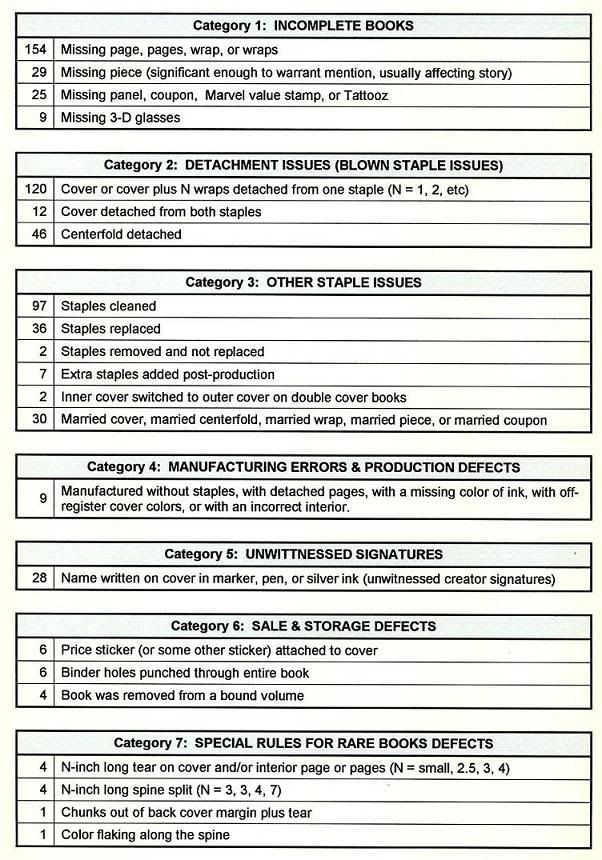
Green Label Category 1 Examples:
Green Label Category 2 Examples:
Green Label Category 3 Examples:
Green Label Category 4 Examples:
Green Label Category 5 Examples:
Green Label Category 6 Examples:
Green Label Category 7 Examples:
Let’s now address the question of how Green Label books should be valued. Because it’s easiest to establish a book’s value once each and every one of its defects have been accounted for via a single representative grade, Blue Label equivalents will be shown for most of the qualifying defects enumerated above.
Blue Label Equivalents for Category 1:
Approximately 34% of the Green Label books in the HA archives are incomplete by virtue of a missing page, piece, coupon, or attachment (Category 1 in the table provided above). Fortunately, a few incomplete books have been encapsulated in Universal Grade holders, and some of those Blue Label examples are shown below. On this basis, it appears that the “true” grade of an incomplete book is either Poor (CGC 0.5) or Fair (CGC 1.0), depending on whether the specimen is missing a page (any page, story or non-story), a panel, or merely a coupon.
Blue Label Equivalents for Category 2:
Approximately 28% of the Green Label books in the HA archives have partially or completely detached covers, centerfolds, and/or wraps (Category 2 in the table provided above). Fortunately, many similarly flawed books have been encapsulated in Universal Grade holders, and some of those Blue Label examples are shown below. Since the detachment defect is the primary (or perhaps even sole) flaw, these high-grade examples reveal the approximate deduction that CGC takes for a specific detachment defect when it is not ignored. On this basis, it appears that: a lightly worn book with a cover detached at a single staple will have a Universal Grade of 7.0 to 7.5; a book with a completely detached cover will have a Universal Grade of 4.0 or lower (depending on the severity of its other defects); a pristine book with a centerfold detached at a single staple will have a Universal Grade as high as 9.2 or 9.4; and a lightly worn book with a completely detached centerfold will have a Universal Grade of 6.5 to 7.0. Note: DC comics from the mid-1960s were manufactured with relatively thin cover stock and are especially prone to suffering a “blown” staple.
Notes on Category 3:
Approximately 28% of the Green Label books in the HA archives have either a “married” component or “tweaked” staples (Category 3 in the table provided above). About half the books with staple modifications come out of only three collections: forty-eight books with cleaned staples (Four Color and Duck books) are from the Don Vernon Collection; another dozen or so books with cleaned staples (All-American, All-Flash, All-Star, and Flash Comics) came to market as a group during the summer of 2002; and ten books with cleaned or replaced staples are from the Pinnacle Hill Collection.
Notes on Category 4:
Less than 2% of the Green Label books in the HA archives have manufacturing/production defects such as missing staples, detached pages, missing ink, off-register cover colors, or an incorrect interior (Category 4 in the table provided above). I have not been able to find scans of Universal Grade books with identical flaws.
Blue Label Equivalents for Category 5:
Approximately 4% of the Green Label books in the HA archives have unwitnessed artist/creator signatures (Category 5 in the table provided above). CGC appears to treat books with unwitnessed signatures in the same manner that they treat books from recognized pedigrees that have the original owner’s name on the cover (Larson, Macon, Okajima, Winnipeg, etc). Since CGC does not offer a post-signing authentification/certification service (similar to what PSA/DNA offers for sports memorabilia), each buyer must decide for himself/herself how to value a book with a “qualified” signature relative to one with a “witnessed” signature and encapsulated in a Yellow Label Signature Series holder.
Blue Label Equivalents for Category 6:
Less than 3% of the Green Label books in the HA archives have cover stickers or binder/binding holes (Category 6 in the table provided above). The 1939 edition of the New York World’s Fair comic is normally awarded a Blue Label, in spite of the price sticker on cover. Books with binder holes or books removed from bound volumes are rarely slabbed, so there are only a few Blue Label examples in the archives. However, several hundred three-hole punched file copies were among the thousands of books found at the Eastern Color Warehouse in the mid-1970s, and sales of raw specimens have occurred with regularity during the past 30+ years. Most reputable sellers assign grades of GD/VG to VG to otherwise pristine punched specimens from this find. Likewise, scores of bound volumes have sold at public auction over the years. Most reputable auction houses use the VG price of the individual issues to estimate the fair market value of a well-preserved bound volume. This is probably as good a starting point as any for establishing the “unqualified” value of an otherwise well-preserved single book that was once part of a bound volume.
Blue Label Equivalents for Category 7:
Less than 2% of the Green Label books in the HA archives earned that status by virtue of a “common” defect, such as color chipping, a spine split, or a cover/page tear (Category 7 in the table provided above). The books in this particular category are all high grade (CGC 8.5 or better), and most are from pedigreed collections. However, the overwhelming majority of high grade submissions are encapsulated in Blue Label holders. So I’m at a loss to explain why a relatively small number of books were singled out for “special” treatment. Since CGC no longer lists significant defects on their Universal labels, self-evident Blue Label examples are difficult to come by. But here are a few from the early days of CGC:
Even with clickable thumbnails, the presentation is quite image heavy. So please use discretion if you feel a need to quote a portion either post. Also, please remember that CGC’s grading and/or slab labeling standards have changed (and no doubt will continue to evolve) with time. Therefore, past performance is no guarantee of future results.
You didn't give any estimate on the value for the Green label for Category 5. As a professional dealer for over 43 years and a senior Overstreet advisor for most of those, the value for a Green Label versus a Blue Label are quite a bit less. That is a beef I have with CGC. I will not ever ask them to certify an unwitnessed signature, but why the practice of placing them in a Green Label? Are they saying if a collector attends a comic book convention and gets their books signed by artists at the show, the book has been defaced and worth less! What I wish is for CGC to return to its original practice before they started marketing their Signature Series books. Place any unwitnessed signed books in a Blue Label with the note about the signature on the cover. This will eliminate the significant drop in value for unwitnessed signed books. It will then be up to the potential buyer to decide whether he believes or disbelieves the seller on the authenticity of the signature.
- The Lions Den, MisterMR and grendelbo
-
 3
3
-
7 minutes ago, sagii said:
@Redbeard Here's a blue label example, but i guess this one got a universal because the name was written on the inside.
When i got this from CLink a couple years back, they mentioned the seller claims to have sent a few books to Jim Mooney and had him sign them inside if i remember correctly.
As I stated in my post to Rick, this is what I feel that CGC should do with all unauthenticated signed books. I object to the new practice of placing these books in Qualified labels which sell for less.
-
On 2/15/2019 at 10:29 AM, MrBedrock said:
Ron, in your scenerio if you had a Universal 9.8 WSF 29 and a Frazetta signed Qualified 9.8 WSF 29, both for sale you would definitely price the autographed copy higher. You certainly wouldn't sell it for less. Most knowledgeable collectors would pay more for the autographed copy knowing that you are an expert in that regard.
So why do we assume that a CGC Green label means it is worth less?
My point is that CGC has stated that they do not authenticate signatures unless they witness them. They do not want to get into the signature authentication business because it is a difficult industry riddled with forgeries and prone to much fraud. If anyone is dealing with signatures then they shouldn't be relying on CGC to authenticate them.
Sorry Rick, but I disagree. The Qualified label will definitely sell for less than the Universal label if both books are the same and have the same grade/quality. I am constantly checking the auctions and this is just a fact. To the other poster that mentioned CBCS does do signed books, there is also a problem there. I am good friends with Steve Borock, but CBCS books sell for less than similar CGC graded books. Thank you Rick for posting that Marvel Mystery beauty signed by Schomburg. That CGC label is exactly what I want CGC to do with all unauthenticated signed books. Put it in a blue label with the note - Alex Schomburg name on the cover. Since I know that a Qualified label sells for less, it is almost like CGC is declaring that an unauthenticated copy with a signature you know is true since you obtained it personally from the artist is in CGC view a defaced book by implication. BTW Rick, I am still not selling it at this time, but do you still need the Subby 2 should I ever decide to sell. I have you down in my mind as first on the list for that book.
-
I believe that CGC in their zeal to promote their Signature Series books feel they can get away with this move of not placing signed books in a blue label with a note saying there is a signature on the book. This would not endanger them for any possible litigation. However, one of the consequences of their current policy is that one can no longer state they have the best copy even if it is the current highest graded copy. There may be better copies out there that will never be graded because they were signed by the creator/artist. Think about that one for awhile. The big push for these record prices is because people believe they are buying the best copy, or one of the best copies rather than just the highest graded copy despite everyone just stating it is the highest graded copy. See if these auctions houses can get these record prices if they advertised the item as the highest graded copy, but there may be better copies ungraded. Yes, this is implied, but most that buy these books do not have this understanding.
What infuriates me further on this subject is any known comic writer/artist that signs your book is now defacing your book and devaluing the item since Qualified graded books go for way, way less than Universal graded books. Yet, if the book has the name Eldon, or some other collector's name on the cover versus Frank Frazetta, Jack Kirby, Lou Fine, Hal Foster, Alex Raymond, etc., the book is placed in a blue holder without this devaluation aspect. Now this makes no sense at all.
-
Probably doesn't belong here on this thread, but here goes anyway. I understand why CGC is not recognizing signed books as far as stating it is an actual autograph on the holder, but I don't understand their current practice that is in place. I know they are marketing the Signature series books, but what about books that are signed by artists no longer with us. Example - you have two copies of WSF 29 - Gaines copies. You know they are both identical and perfect. However, you were lucky enough to have Frank Frazetta sign the cover of one of them. Did you know that if you send them both into CGC, one will come back say a Universal 9.8. However, the other copy will come back a 9.8, with the note that there is a name on the cover, and it will be in a QUALIFIED holder. Now which of the two would a normal person want. Of course the Frazetta signed copy since he rarely did autographs. But, since that is now in a Qualified holder, it will now be worth far, far less. At the same time, if you buy a copy of a book that has Ruth or Ben, or any other name on the cover, it will be graded and placed in a Universal holder. This practice makes no sense to me. Why not put them all in a universal holder with the grade and the one with a name on the cover has that mentioned as a comment on the label. The only reason I can think of is that CGC is worried that they will not get the premium markup they hope for with their Signature Series books.
-
Yep, that's my friend Terry. Classic Terry for sure...
-
On 1/12/2019 at 12:15 PM, Redbeard said:
I guess my new nickname is Jerry Iger!?!
BTW, I bought this cover from Bob Selvig when he was in LA working for ACBC. I also bought the Hit Comics 11 cover from Bob. I later bought the Seven Seas 6 cover from Terry Stroud at ACBC about a year or two later. I don't know where Bob and Terry got the Seven Seas covers. Next time I see Terry, I'll ask him.
-






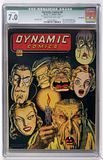


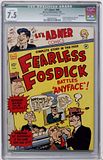
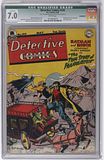

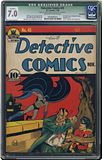
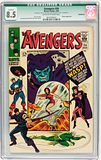

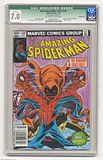
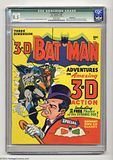
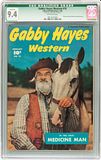
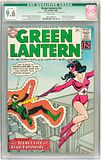
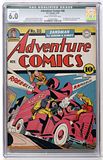

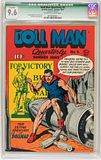

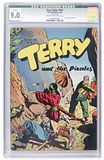

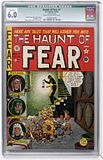

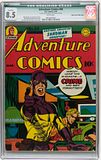

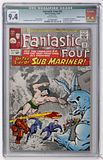

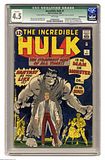
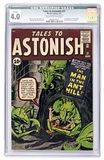
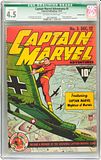
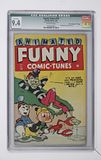


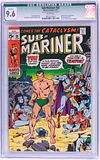
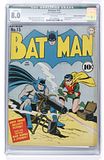
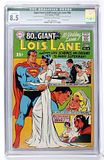
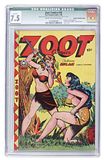




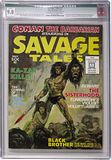
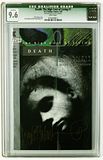
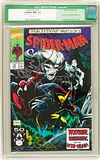
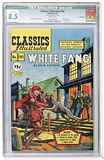
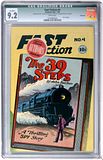

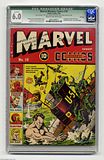


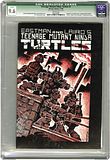
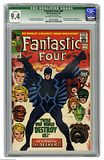
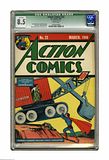
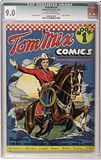
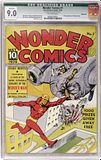
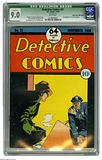
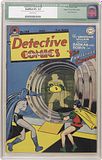
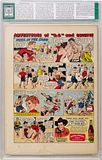


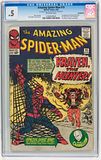
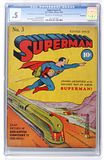
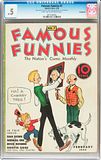
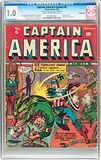



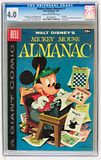
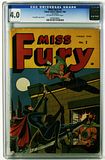
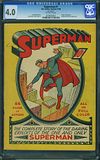
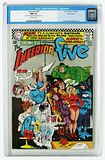

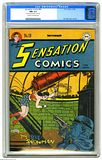

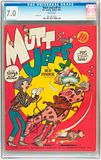
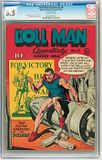



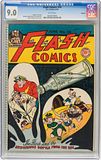


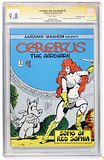


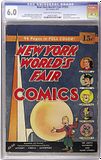
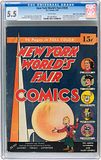
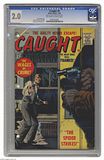
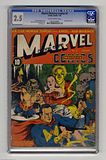







Grading comics on eBay
in Comic Book Grading and Restoration Issues
Posted
Those abrasions are significant. One should bear in mind in the SA, there are a population of 9.4 and above on almost all SA books. This is not true for GA books. I strongly agree with CGC assessment of this book.